After 20 months of negotiations, Iran has agreed a long-term nuclear deal with the P5+1 group of world powers – the US, UK, France, China and Russia plus Germany – to limit its sensitive nuclear activities in return for the lifting of crippling sanctions.
The White House says that with the deal in place, the world can know that “tough, new requirements will keep Iran from obtaining a nuclear weapon”.
Iran says it has the right to nuclear energy – and stresses that its nuclear programme is for peaceful purposes only.

Uranium enrichment
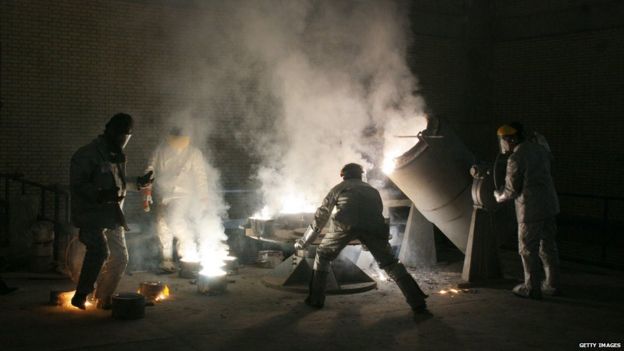

There are two uranium enrichment facilities in Iran – Natanz and Fordo – where uranium hexafluoride gas is fed into centrifuges to separate out the most fissile isotope U-235. Low-enriched uranium, which has a 3%-4% concentration of U-235, can be used to produce fuel for nuclear power plants. But it can also be enriched to the 90% needed to produce nuclear weapons.
Iran would need tens of thousands of centrifuges to construct a bomb. It currently has almost 20,000. Under the Joint Comprehensive Plan of Action (JCPOA)agreed on 14 July, it will be limited to installing no more than 5,060 of the oldest and least efficient centrifuges at Natanz for 10 years.
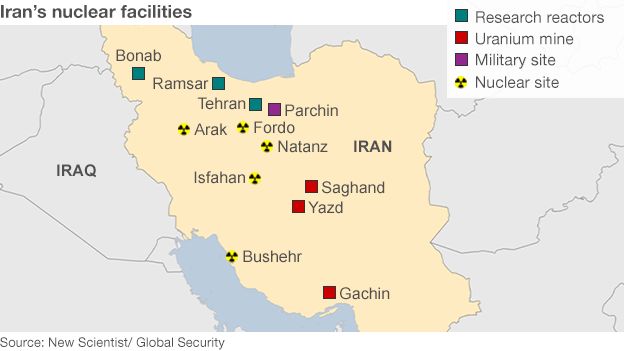

Iran’s uranium stockpile will also be reduced by 98% to 300kg (660lbs) for 15 years. It must also keep its level of enrichment at 3.67%.
In addition, research and development will take place only at Natanz and be limited for eight years. No enrichment will be permitted at Fordo for 15 years, and the underground facility will be converted into a nuclear, physics and technology centre. The 1,044 centrifuges at the site will produce radioisotopes for use in medicine, agriculture, industry and science.



Plutonium pathway
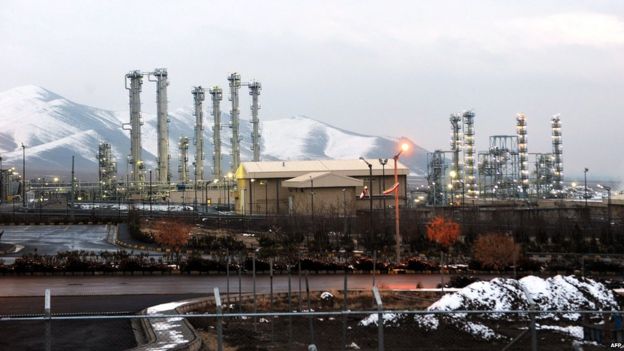

Iran has been building a heavy-water nuclear facility near the town of Arak. Spent fuel from a heavy-water reactor contains plutonium suitable for a nuclear bomb.
World powers had originally wanted Arak dismantled because of the proliferation risk. Under an interim nuclear deal agreed in November 2013, Iran agreed not to commission or fuel the reactor.
Iran has now agreed to redesign the reactor so it cannot produce any weapons-grade plutonium and presents less of a proliferation threat, according to the White House. All spent fuel will be sent out of the country as long as the reactor exists.
Iran will also not be permitted to build additional heavy-water reactors or accumulate heavy water for 15 years.




Covert activity
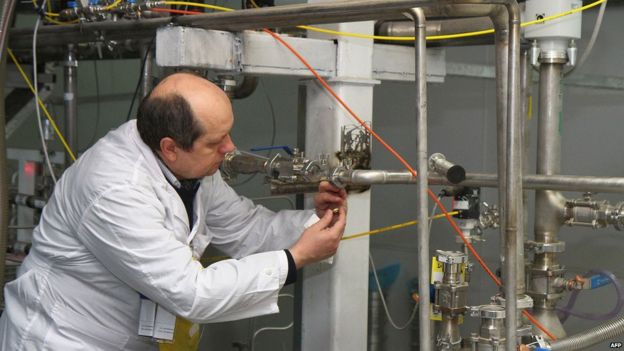

The White House is confident that the JCPOA will prevent Iran from building a nuclear programme in secret. Iran, it asserts, has committed to “extraordinary and robust monitoring, verification, and inspection”.
Inspectors from the global nuclear watchdog, the International Atomic Energy Agency (IAEA), will continuously monitor Iran’s declared nuclear sites and also verify that no fissile material is moved covertly to a secret location to build a bomb.
Iran has also agreed to implement the Additional Protocol to their IAEA Safeguards Agreement, which will allow inspectors to access any site they deem suspicious.
As part of their investigation into the possible military dimensions of Iran’s nuclear programme, IAEA inspectors will also be able to request visits to military sites. However, access is not guaranteed and could be delayed. Iran will have the right to challenge the IAEA request and an arbitration panel will then decide on the issue.



‘Break-out time’
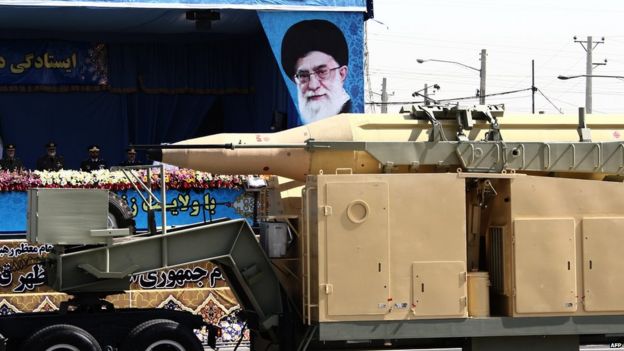

As it stands, Iran has a large stockpile of enriched uranium and nearly 20,000 centrifuges, enough to create eight to 10 bombs, according to the White House. US experts believe that if Iran decided to rush to make a bomb without the deal in place, it would take two to three months until it had enough 90%-enriched uranium to build a nuclear weapon – the so-called “break-out time”.
The White House says the JCPOA will remove the key elements Iran would need to create a bomb and increase its break-out time to one year or more.
Iran has also agreed not to engage in activities, including research and development, which could contribute to the development of a nuclear bomb.




Lifting sanctions
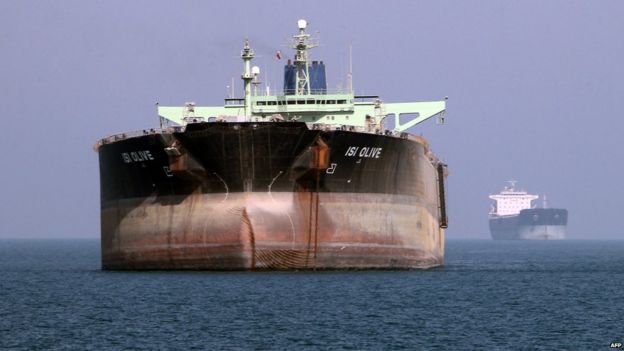

Sanctions imposed by the UN, US and EU in an attempt to force Iran to halt uranium enrichment have crippled its economy, costing the country more than $160bn (£102bn) in oil revenue since 2012 alone. Iran stands to receive more than $100bn in assets frozen overseas, and will be able to resume selling oil on international markets and using the global financial system for trade.
Iran will not see sanctions lifted until the IAEA confirms that it has followed through with its end of the JCPOA. Should Iran violate any aspect of the deal, the UN sanctions will automatically “snap back” into place for 10 years, with the possibility of a five-year extension.
An eight-member Joint Commission comprising representatives of the P5+1 nations, the EU and Iran will be established to monitor compliance. If the commission cannot resolve a dispute, it will be referred to the UN Security Council.
Iran has also agreed to the continuation of the UN arms embargo on the country for up to five years, although it could end earlier if the IAEA is satisfied that its nuclear programme is entirely peaceful. A UN ban on the import of ballistic missile technology could also remain in place for up to eight years.





